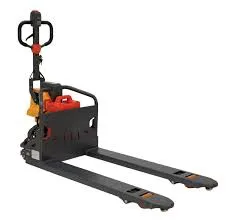


The Importance of Industrial Fall Protection Devices
In industrial environments, the safety of workers is paramount. One of the most significant hazards that employees face, particularly in construction and maintenance tasks, is the risk of falling from heights. According to the Occupational Safety and Health Administration (OSHA), falls are one of the leading causes of workplace injuries and fatalities. To mitigate these risks, the implementation of effective fall protection devices is essential.
Understanding Fall Protection Devices
Fall protection devices are safety equipment designed to prevent workers from falling or to minimize the impact of a fall. They come in various forms, including harnesses, guardrails, safety nets, and personal fall arrest systems (PFAS). Each device serves a specific purpose and is critical in different scenarios, depending on the nature of the work and the height at which it is performed.
1. Personal Fall Arrest Systems (PFAS) These systems utilize a combination of a full-body harness, lifeline, and anchorage point to secure workers while they are elevated. When correctly used, PFAS can effectively stop a fall and minimize the potential for injury.
2. Guardrails Guardrails are physical barriers placed around the edges of platforms, roofs, and other elevated work areas. They are one of the simplest and most effective means of preventing falls, as they provide a visual and physical barrier that discourages workers from getting too close to the edge.
3. Safety Nets Used primarily in construction sites, safety nets are positioned beneath work areas to catch workers in the event of a fall. They are particularly useful in scenarios where other fall protection measures are impractical.
The Advantages of Implementing Fall Protection Devices
Utilizing fall protection devices offers numerous advantages, both in terms of worker safety and organizational efficiency.

1. Reducing Injury and Fatalities The primary benefit of fall protection systems is the reduction of injuries and fatalities related to falls. Properly implemented safety measures can significantly decrease the risk, ensuring that workers return home safely at the end of the day.
2. Compliance with Regulations Industries often require compliance with safety regulations set forth by local and national authorities. Using fall protection devices ensures that organizations meet these legal requirements, avoiding fines and potential lawsuits.
3. Enhanced Productivity A safe working environment contributes to higher employee morale and productivity. When workers feel secure, they can focus on their tasks without the constant distraction of potential hazards.
4. Cost Savings While there may be upfront costs associated with purchasing fall protection equipment and training employees, the long-term savings from reduced accident rates, decreased insurance premiums, and lower medical costs far outweigh these initial investments.
Training and Best Practices
The effectiveness of fall protection devices is contingent upon proper training and adherence to best practices. Employers should conduct regular training sessions for employees on the use, maintenance, and inspection of fall protection systems. It is also vital to cultivate a safety culture within the organization, encouraging open communication about safety concerns and promoting safe work practices.
Conclusion
In conclusion, industrial fall protection devices are not merely optional tools; they are essential components of a comprehensive safety strategy in workplaces where height-related hazards are prevalent. By investing in high-quality fall protection equipment and ensuring that employees are well-trained in their use, employers can foster a safer work environment, enhance productivity, and ultimately save lives. Prioritizing fall protection is not just a regulatory obligation—it's a moral imperative that underscores the commitment to the well-being of all employees engaged in potentially dangerous work.



